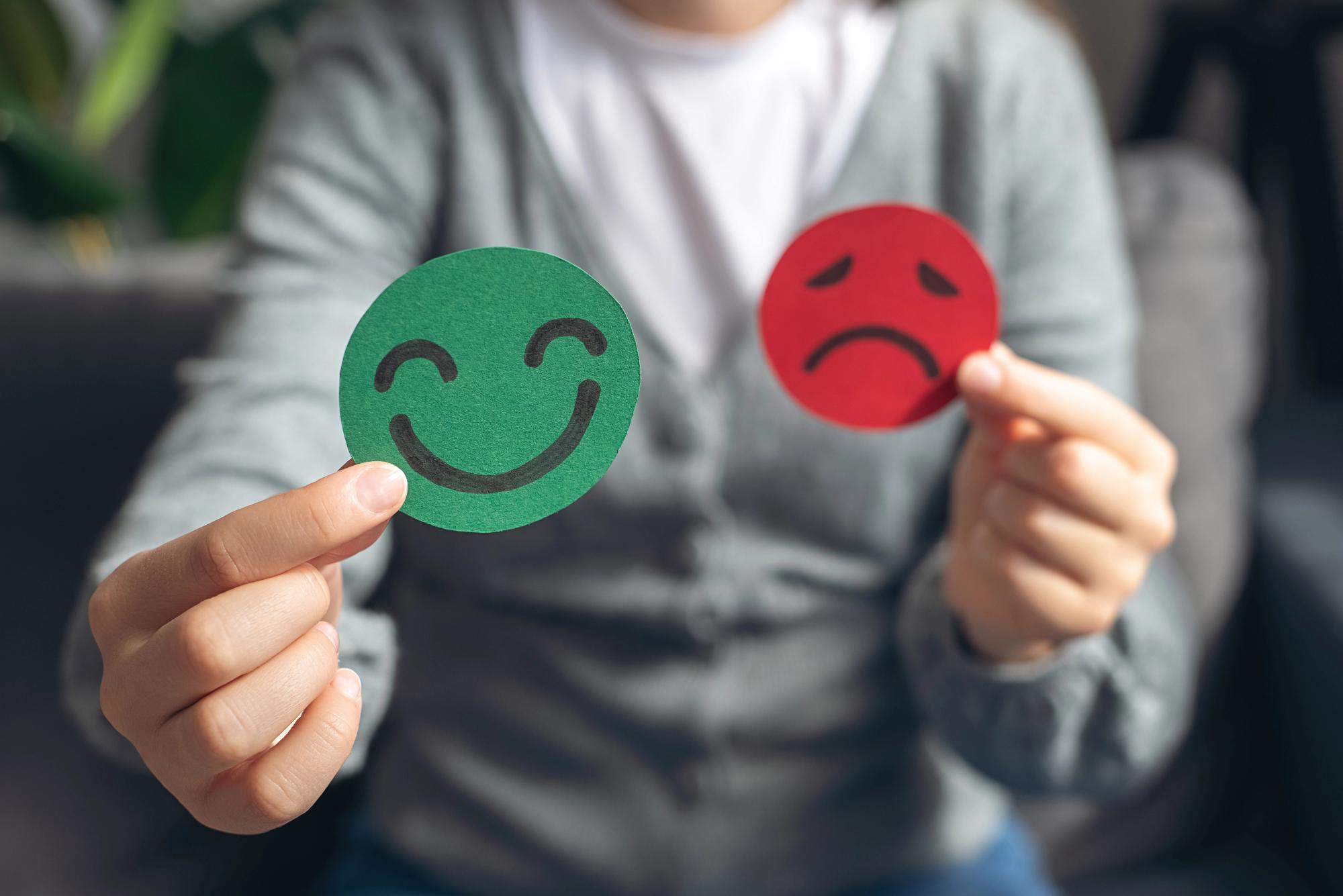Bipolar 1 vs. Bipolar 2: Crucial Differences You Need to Know



As a Clinical Research Specialist, writer, and person with lived experience in mental health recovery, Grace blends clinical research with honest storytelling to inspire healing and hope. In her free time, she enjoys writing books for young adults, an age when she needed stories the most.

Dr. Mala, is the Chief Clinical Officer at Recovery.com, where she develops impartial and informative resources for people seeking addiction and mental health treatment.




As a Clinical Research Specialist, writer, and person with lived experience in mental health recovery, Grace blends clinical research with honest storytelling to inspire healing and hope. In her free time, she enjoys writing books for young adults, an age when she needed stories the most.

Dr. Mala, is the Chief Clinical Officer at Recovery.com, where she develops impartial and informative resources for people seeking addiction and mental health treatment.
Not everyone with bipolar will have the same symptoms. The differences are drastic enough for bipolar to have two distinct clinical categories: types 1 and 2.
Both versions of bipolar include ‘polar’ opposite moods—noticeable highs and lows. Just how noticeable depends on what type of bipolar you have. Shorter periods of low-level mania (called hypomania) are unique to bipolar 2, while bipolar 1 has pronounced episodes of mania that may require hospitalization.
With such distinct differences between symptoms, treatment and management for these sister conditions requires a personalized touch.
Characteristics of Bipolar Disorders
Bipolar disorder is a biological mental illness1, meaning parts of your brain aren’t working exactly how they should. Unlike depression, which can be the product of an unpleasant situation, bipolar exists independently of what you’re experiencing. Life events can certainly trigger a mood swing, but they aren’t what causes bipolar to exist in the first place.
A combination of genetics, your brain’s ability to send and receive signals, your natural temperament2, and more produces bipolar disorders. Malfunctioning connection points in the brain mean you can get skewed amounts of neurotransmitters like dopamine and serotonin, leading to extreme mood swings, irritability, depression, and mania2.
Mood Stabilizers vs. Antidepressants
Mood stabilizers, the go-to medication for bipolar, work by improving and stabilizing2 those ineffective connection points in your brain. This means neurotransmitters can flow as designed, leveling out mood swings and reducing mania. Highs won’t feel as high, and lows not so low—basically, the healthy baseline between depression and mania.
Antidepressants produce more of certain mood-boosting neurotransmitters or help your brain receive more of them. While mood stabilizers help neurotransmitters flow correctly, antidepressants affect the amount of neurotransmitters created and/or received.
Often, both a mood stabilizer and an antidepressant are used to treat bipolar disorders.
Signs and Symptoms of Bipolar I
Bipolar 1 mania often has a strong presentation, including out-of-character behavior that patients typically fear or regret. Manic episodes last at least 7 days1, including symptoms like
- Extreme irritability
- Extreme elation; high mood
- Fun-seeking behaviors, including sexual promiscuity
- Lacking sound judgment when it comes to purchases, activities, and priorities
- Talking quickly and bouncing between ideas, sometimes so fast others can’t keep up or understand
- Needing less sleep
- Highly productive
- Feeling especially important or special
And, sometimes,
- Psychosis
- Delusions
- Hallucinations
The symptoms of mania may require hospitalization to manage the person’s safety and well-being, and to prescribe the correct mood stabilizers and bring them out of acute mania. Mood stabilizers like lithium can address acute mania and manage symptoms long-term, though prescription trends show more doctors leaning away from lithium3 and into other medications. These can have fewer side effects and easier tolerability. Atypical antipsychotics have proved helpful for bipolar 1 and 2.
Along with high moods and mania, people with bipolar 1 also experience extreme periods of depression. Episodes of depression typically last 1-2 weeks with bipolar 11, but can last longer. With this depression can come symptoms like
- Thoughts or plans of suicide
- Self-harm
- Decreased energy and motivation
- Loss of interest or pleasure in once-enjoyable activities
- Feeling hopeless
- Low mood and fatigue
Mood stabilizers and atypical antipsychotics can help manage depression, too. Interestingly, for bipolar depression, clinicians don’t recommend antidepressants as a sole medication. They can actually trigger a manic episode if not combined with a mood stabilizer1 or atypical antipsychotic.
It’s not a choice, it’s a condition. I have bipolar disorder, but it doesn’t define me.
Carrie Fisher
Research suggests that there are complex links between diabetes and mental health conditions, such as depression, bipolar disorder or schizophrenia — connections that are not fully understood.
National Alliance on Mental Illness
Signs and Symptoms of Bipolar 2
Bipolar 2 mimics bipolar 1, but with a crucial difference in manic symptoms. Someone with bipolar 2 experiences hypomania4, which means their periods of mania are much less intense and less debilitating, often not affecting their safety, relationships, and work responsibilities nearly as much as mania. You can remember “hypo” means low or less, so low-mania.
Sometimes, people with bipolar 2 actually enjoy their hypomanic states. They often feel more energized, but not out of control, and happier, but not over energized. Perceiving hypomania as a “good mood”, especially following a depressive episode, can keep those with bipolar 2 from seeking treatment or realizing something’s amiss.
Hypomania occurs more frequently than mania5 and can have negative consequences even if people perceive them as positive. Many people with bipolar 2 don’t feel comfortable with their actions and behaviors during a hypomanic episode, either. Symptoms of hypomania5 include
- Increased energy
- Less need for sleep
- Urge to socialize and talk about anything and everything
- Risky and promiscuous sexual behaviors
- Extreme irritability
- Intense anxiety
Notably, hypomania doesn’t cause psychosis, delusions, or hallucinations. People in a hypomanic state may not even notice it’s happened, whereas mania has much more pronounced signs and effects. Loved ones may notice hypomania, and they will certainly notice mania.
Bipolar 2 also includes periods of depression, often more so than bipolar 16. Periods of depression can last months or years, while hypomania often lasts several days.
Those with bipolar 2 face the highest likelihood of an incorrect diagnosis6. Since symptoms of mania are much less pronounced than bipolar 1, providers may misdiagnose patients with major depression, dysthymia (constant low-level depression), or borderline personality disorder (BPD). Hypomania can even present as extreme anxiety and irritability, which could be misdiagnosed as general anxiety disorder. Though these conditions can co-occur with bipolar 2, mistaking them for the primary diagnosis delays proper treatment.
Recognizing the cyclic nature of low/high moods can help patients and their providers arrive at an accurate diagnosis. Getting the right diagnosis means getting the most effective medications and therapy, which can be especially vital in treating bipolar disorders.
Key Differences
Key, overarching differences between bipolar 1 and 2 include
- Mania vs. hypomania
- Less vs. more frequent depressive episodes
Other differences vary person-to-person. Everyone will experience bipolar 1 or 2 differently. Doctors will often take a deep-dive to determine if you have bipolar 1 or 2, or an entirely different diagnosis.
Treatments for Bipolar 1 and 2
Medications
It’s true mood stabilizers like lithium can be life-changing medications for those with bipolar, especially bipolar 1. Mood stabilizers can manage mania (acute and long-term) and prevent mood cycling.
Certain mood stabilizers and atypical antipsychotics center on reducing depression and suicidality, not mania. Those with bipolar 2 often benefit from these types of mood stabilizers, plus an antidepressant.
Therapy
Therapy can help people manage and understand their symptoms. Cognitive behavioral therapy (CBT) focuses on changing thoughts and behaviors to positively alter mood, which can help in a depressive episode. Dialectical behavioral therapy (DBT) teaches practical strategies for managing distress, surviving crisis urges (like suicidal ideation), and interpersonal communication.
Those with bipolar often remain in therapy throughout their lifetime, as regular sessions can help manage stressors and other life events that could trigger a mood swing. Patients can learn personalized strategies for managing their symptoms and receive ongoing emotional support by working with a therapist.
Mood Tracking
Tracking mood serves as a vital tool for people with bipolar disorders. You can download apps designed exactly for this, or track it in a notebook. Keeping track of your mood and what’s happening in your life can clue you into the unique aspects of your mood cycles, helping you proactively manage highs and lows. This can help you feel more in control, not like your moods are happening to you.
Finding Your Cornerstone: Bipolar Maintenance
Figuring out your unique symptoms and expression of bipolar 1 or 2 can take time, but with accurate diagnoses, medications, therapy, and acceptance, you can learn to manage your bipolar as confidently as you might manage your diet or sleep.
Regular appointments with therapists and psychiatrists can be key to long-term recovery. Let your loved ones know of your condition too, so they can offer their support when needed. And keep an open, non-judgemental mind as you navigate your symptoms—you’ve got this, and you’re in good company on the journey.
Use Recovery.com to find recovery centers offering bipolar treatment, with pictures, insurance information, reviews, and much more to help you find the best fit for you.
-
Bipolar Disorder - National Institute of Mental Health (NIMH). https://www.nimh.nih.gov/health/publications/bipolar-disorder. Accessed 29 Jan. 2025.
-
MANJI, HUSSEINI K., et al. “The Underlying Neurobiology of Bipolar Disorder.” World Psychiatry, vol. 2, no. 3, Oct. 2003, pp. 136–46. PubMed Central, https://www.ncbi.nlm.nih.gov/pmc/articles/PMC1525098/.
-
Kessing, Lars Vedel. “Why Is Lithium [Not] the Drug of Choice for Bipolar Disorder? A Controversy between Science and Clinical Practice.” International Journal of Bipolar Disorders, vol. 12, no. 1, Jan. 2024, p. 3. BioMed Central, https://doi.org/10.1186/s40345-023-00322-7.
-
Hypomania - an Overview | ScienceDirect Topics. https://www.sciencedirect.com/topics/neuroscience/hypomania. Accessed 29 Jan. 2025.
-
Camacho, Marta, et al. “Hypomania Symptoms Across Psychiatric Disorders: Screening Use of the Hypomania Check-List 32 at Admission to an Outpatient Psychiatry Clinic.” Frontiers in Psychiatry, vol. 9, Nov. 2018, p. 527. PubMed Central, https://doi.org/10.3389/fpsyt.2018.00527.
-
Datto, Catherine, et al. “Bipolar II Compared with Bipolar I Disorder: Baseline Characteristics and Treatment Response to Quetiapine in a Pooled Analysis of Five Placebo-Controlled Clinical Trials of Acute Bipolar Depression.” Annals of General Psychiatry, vol. 15, Mar. 2016, p. 9. PubMed Central, https://doi.org/10.1186/s12991-016-0096-0.
Our Promise
How Is Recovery.com Different?
We believe everyone deserves access to accurate, unbiased information about mental health and recovery. That’s why we have a comprehensive set of treatment providers and don't charge for inclusion. Any center that meets our criteria can list for free. We do not and have never accepted fees for referring someone to a particular center. Providers who advertise with us must be verified by our Research Team and we clearly mark their status as advertisers.
Our goal is to help you choose the best path for your recovery. That begins with information you can trust.








